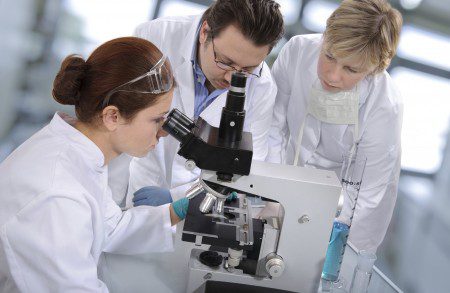It’s #TimeToGetTested
Understanding the role of mutations and biomarker testing is one of most important things patients must learn. Uncovering the driving force behind each individual’s tumors is not just important, it is critical. Biomarker testing is an opportunity to improve and optimize treatment – possibly avoiding unnecessary treatments and getting to the right treatment sooner. Currently, biomarker testing rates in the gastrointestinal stromal tumor patient population are relatively poor – only about 26.7% of patients have had testing done. The Life Raft Group Patient Registry, which is a group of extremely proactive patients, notes only about 53% of patients are aware of their mutation.
This is why the LRG is launching the It’s Time campaign. It is time to stop talking and take action to assure patients get tested. The goals of this campaign are to improve the understanding of biomarker testing in the cancer community and increase the number of patients tested.
In this post, we talk about mutational testing increasing better treatment outcomes.
It’s time to increase better treatment outcomes!
 In our LRG Patient Registry, we see that patients that have had biomarker/mutational testing have better treatment outcomes than patients that do not. Currently, 55% of Patient Registry members have had biomarker/mutational testing.
In our LRG Patient Registry, we see that patients that have had biomarker/mutational testing have better treatment outcomes than patients that do not. Currently, 55% of Patient Registry members have had biomarker/mutational testing.
If you know your mutation, you have a better chance of getting the most effective treatment more quickly, and increasing your survival time. Knowledge makes an empowered patient and an empowered patient asks and researches their disease. Expert guidelines recommend mutational testing to guide treatment in GIST. Without knowing what mutations is driving your GIST, you may be starting treatment without enough information.
LRG Contributor Becky Owens shared these thoughts about biomarker/mutational testing:
Mutational Testing and Genetics
By Becky Owens
So, I’ve been told that I have GIST!
Life changes suddenly and profoundly when you receive a cancer diagnosis. It’s normal to experience a state of shock, but there is a practical need to develop a plan. While many things are out of your control, you can educate yourself to become an active member of your medical care team.
 This is so overwhelming, where do I start?
This is so overwhelming, where do I start?
Begin by obtaining a copy of the pathology report from either your doctor or from the medical records department. Though reading your pathology report will feel daunting at first, understanding how the pathologist arrived at your diagnosis may be helpful. Your tumor sample was examined under a microscope, looking for features such as the shape of the cells, etc. Based on the features of your cells, the pathologist applied a reagent to the cells in order to look for an overabundance of a protein called c-Kit on the surface of the cells. This process is called immunohistochemical (IHC) staining. If the protein is present it supports the diagnosis of GIST. Taking into account factors such as the size of the tumor and rate of cell division (mitotic count), your GIST was placed into a risk category (low, intermediate, or high).
Now what?
The initial screening most likely did not include genetic mutation testing. Patients who fall into the intermediate or high-risk category should have next-generation sequencing (NGS) performed to determine the presence of (and details about) genetic mutations present in the tumor. Determination of mutation type provides important information relevant to making better treatment decisions. Identification of mutation type can also provide foundational knowledge pertaining to hereditary “syndromes”, which may suggest that family members should receive genetic counseling.
It all looks like alphabet soup…
Let’s try to break this down: Given your GIST diagnosis, you should expect to read that your tumor tested (c-Kit+) upon immunohistochemical (IHC) staining. This result does NOT confirm that you have a KIT gene mutation.
This is all so confusing, I don’t get it…
75% to 80% of GIST cases are driven by either a KIT or PDGFRA gene. The KIT and PDGFRA genes encode the c-Kit and PDGFRA proteins, respectively, that sit on the surface of the cell. These proteins provide the “on/off” growth instructions to the cell. KIT and PDGFRA are oncogenes. Oncogene mutations can result in the cell receiving a continuous “grow” signal, which can be likened to having a stuck accelerator on a car.
Why should I care about that?
Mutation type can greatly influence the behavior and therapeutic response of your GIST to current drugs as well as provide the theoretical basis for sound decision making in choosing a clinical trial. The presence of KIT and PDGFRA mutations can influence other pathways and genes over time, leading to the possible development of secondary mutation(s) and drug resistance. In such cases, the need for genetic re-testing for identification of secondary mutations can be useful.
The Name Game
Historically, GIST tumors that lacked either a KIT or gene mutation were referred to as “wildtype” given that their genome more closely resembled that present in the general population. Researchers have recently identified additional GIST-activating mutations (all of which stain Kit+ on IHC staining). Some examples of these genes are NF1, BRAF, KRAS, SDH, as well as some gene fusions. Correct descriptive nomenclature for GIST tumors should provide reference to the mutation driver involved, for example: KIT-mutant GIST, PDGFRA-mutant GIST, NF1 GIST, BRAF-mutant GIST, KRAS-mutant GIST, SDH-mutant GIST, etc. GIST tumors without an identified genetic mutation should be referred to as “unclassified” GIST.
What if I don’t have a KIT or PDGFRA mutation?
Beyond KIT and PDGFRA-mutant GIST, the next most common group is SDH-deficient GIST. The succinate dehydrogenase (SDH) gene plays a role in the citric acid cycle responsible for turning food into energy within the mitochondrial membrane. The SDH gene is composed of four subunits (a, b, c, and d). A mutation in any of the four subunits impairs function of the entire SDH complex by preventing normal conversion of the enzyme succinate into fumarate. An accumulation of succinate within the cells produces the consequence of additional molecules being attached to the DNA, a process called hypermethylation, which alters cell function. The SDH gene is a tumor suppressor gene. Loss of function of the SDH gene can be likened to losing brakes on a car, with the cells unable to “stop” tumor growth.
In the case of epimutant SDH GIST, there is no identified SDH-mutation present. Rather, there is a problem with the proteins that envelope the DNA, interfering with function of the SDH complex.
How can I figure out if my tumor is SDH-deficient?
The absence or presence of proper function of the Succinate Dehydrogenase (SDH) complex can be determined by performing SDH immunohistochemical (IHC) staining on the tumor tissue. A loss of function (SDH-deficiency) is confirmed if the cells do not react to the staining reagent. SDH-deficiency can be caused by either by:
- the presence of an SDH gene mutation or,
- impaired function of the entire SDH complex due to a problem in the environment of the cells (an epimutation).
In either case, SDH-deficiency is felt to be the pathologic condition driving tumor growth and proliferation. Negative IHC staining does not confirm the presence of an SDH mutation. Next generation sequencing (NGS) mutation testing is required to detect the presence of an SDH-mutation (subunit a, b, c, or d). SDH IHC staining for SDH-deficiency and SDH gene mutation testing are not standardly performed at the time of initial GIST diagnosis.
Patients who are diagnosed at 30 years of age or younger are statistically more likely to have an SDH gene mutation than a KIT or PDGFRA gene mutation. Those with an SDH gene mutation or epimutation most likely will not respond to Gleevec. SDH IHC can be performed using paraffin-embedded tumor tissue stored at the hospital where the surgery was performed. Paraffin-embedded tissue is frequently kept for 10 years following surgery. Although SDH IHC staining for SDH-deficiency does not reveal whether or not an SDH mutation is present, it is an indicator of SDH unit dysfunction.
All of this information is overwhelming, could you please just tell me the bottom line?
When seeing a GIST specialist for the first time, it is helpful to take a copy of your pathology report with you. Pathology and mutation terminology can be confusing. Having the written report with you will help the specialist clarify what testing has been performed on your tumors. This will enable them (and you) to make better decisions pertaining to your care.
If you would like to talk to someone about mutational testing, please contact our Director of the Life Raft Group Patient Registry, Denisse Montoya at dmontoya@liferaftgroup.org
Special thanks to the sponsors of this initiative:





